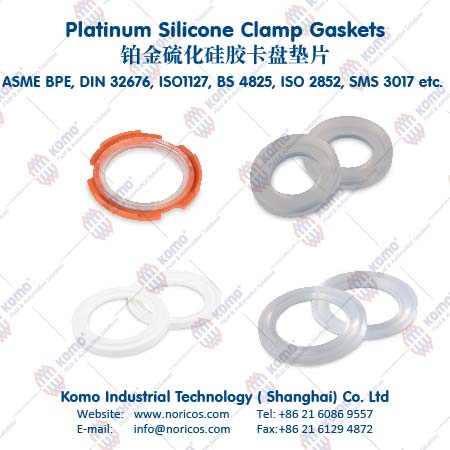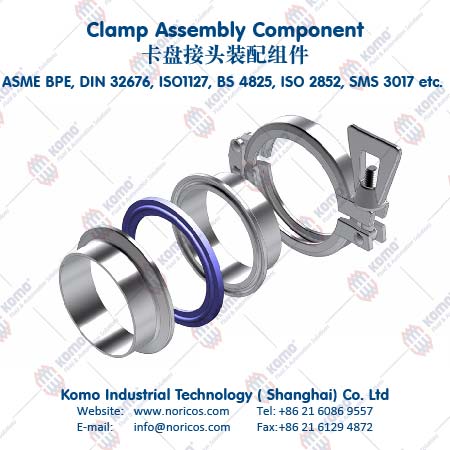|
Standards
|
We provide sanitary gaskets in all standards such as:
|
★ DIN32676 (Series A)
★ ISO1127 (DIN32676 Series B)
★ ASME BPE (DIN32676 Series C)
★ ASME BPE Category I & II ( lipped & unlipped)
★ ISO2852
★ SMS3019
★ BS4285
★ and etc.
|
Silicone is widely used in pharmaceutical applications for two major reasons.
First, and foremost
Is safety. Silicone does not contain plasticizers or other additives that could leach into a drug product and cause toxicological issues.
Second
Silicone is highly flexible and tear-resistant, making it a good choice for sealing fluids in downstream processes.
Platinum Cured Silicone VS Peroxide Cured Silicone
Peroxide-cured gaskets contain a small residue of 2,4 DCBA (dichlorobenzoic acid) as a by-product of the curing reaction.
Platinum-cured gaskets have no 2,4 DCBA residues, its only by-product is H2O.
In some critical bioprocesses, the small amount of DCBA might harm the media that is made. The relative value and impact of these characteristics should be evaluated carefully when selecting the silicone type for fluid handling applications.
All material can to option colour, details information please consult to Komo.
|
Black
|
White
|
Blue
|
Green
|
Brown
|
Transparent
|

|
Approval Certification
★ FDA CFR 177.1550
★ FDA CFR 177.2600
★ USP Class VI-121°C testing Part <88>
★ USP testing Part <87>
★ USP 41 Cytotoxicity <87>
★ USP testing Part <661>
★ USP testing Part <381>
★ EP 3.1.9 European Pharmacopoeia
★ EC1935/2004 (EC10/2011)
★ EMEA/410/01 (TSE/BSE free)
★ ADIF ★ ISO 10993-5
★ Cytotoxicity Criteria Test
★ ISO 10993-5
★ Cytotoxicity Criteria Test

